  |
| Track this thread - Email this thread - Print this thread - Download this thread - Subscribe to this forum |
|
Post
#21
|
|
 baddest of them all
Joined: 2 August 2008
Posts: 21,776 User: 6,764  |
Issue 004:
QUOTE  Lucy James A Note From Dua In Afghanistan he’s called Rescue Man, but to me, he is my friend Amed Khan. Amed has spent years working in conflict zones such as Syria and Somalia; now he’s saving lives in Afghanistan, having evacuated 1,500 people to safety to date. Afghanistan is imploding in front of us. Since the withdrawal of Western forces and the subsequent takeover by the Taliban, the economy has collapsed, 23 million people are on the edge of famine, and one million children are at risk of dying from starvation. I asked Amed for his perspective, to take us through the dreadful scenes of chaos during the Taliban takeover to the now daily fight for survival. It isn’t an easy read, but I hope it inspires you, as it has me, to think about what we can do to help avert a humanitarian crisis that is beyond imagination. A good place to start? Demand our governments loosen their stranglehold on the Afghan economy and get aid into the country now. It really is a question of life or death. Dua x  Anthony Gerace “What Keeps Me Awake At Night Is Those Who Are Left Behind” Amed Khan as told to Maria Padget When, in April 2021, President Joe Biden announced his imminent intention to withdraw all US troops from Afghanistan, everyone knew that the country was on a countdown to a full takeover by the Taliban. Two months before the militant Islamist movement swept into power following the Western forces’ final exit on 31 August 2021, I was at home in New York when I received the phone call that would turn my life upside down. My friend and fellow activist John Dautzenberg asked if I’d be the financial sponsor on a visa application for two young Afghan girls and their grandmother. The girls’ mother, a USAID project director and a named target of the Taliban, was already in America and frantic to get her family to safety. Despite official pledges to evacuate families whose association with the US government put them at risk, their previous visa applications had been refused. I’d sponsored visa applications before, it seemed like an easy ask, so of course I said I’d help. By early August, word had got around that I was launching an evacuation effort, and my phone started ringing more frequently. People I’d worked with in crisis situations over the years would ask, ‘Are you involved in this? Because if you are, I have five people who really need to get out…’ As the requests rolled in, it became clear I needed to assemble a team. By mid-August the international coalition’s only remaining stronghold was the airport. The Taliban controlled the streets. At this point, there was no hope of getting the girls out unless I got on a plane and got them myself. As there were months of notice prior to the US withdrawal, it would be fair to expect a military-efficient system of evacuations. Instead, when I landed at Kabul there was total mayhem and panic. I’ve worked in conflict zones including Syria and Somalia but nothing compares to the scenes of chaos at the airport. Desperate crowds were left to fight it out with each other at the airport gates. Having a visa was no guarantee of departure – if your name wasn’t also on a US military list held by a soldier at one of the airport gates, you weren’t getting in. And it was anyone’s guess which soldier, at which gate, held the precise list your name was on. The girls I was trying to evacuate – the youngest just three years old – and their grandmother were in the midst of this mayhem. By now they had their travel permits and authorisation to board a US military flight, but each day they would join the human crush at the gates, only to be turned away. Days of this took their toll. The youngest girl collapsed with dehydration and needed life-saving intravenous fluids at the hospital. Their grandmother, facing exhaustion and despair, decided enough was enough and she would rather die than face the airport crush again. We convinced her to try one more time. “Frantic phone calls and texts drawing on every contact I’d ever made in governments and aid agencies all around the world finally paid off” The US military option was clearly not going to work. Frantic phone calls and texts drawing on every contact I’d ever made in governments and aid agencies all around the world finally paid off. Just as everyone was losing hope, on 27 August 2021, four days before the last US troops left, we were able to join a Ukrainian evacuation effort. By then, my two girls and their grandmother had grown to a group of 135 people. You might ask, why Ukraine? Well, it wasn’t a war zone back in August and I’ve also learned that the quickest way to get people to safety is generally through any country that will take them. For the most part, it’s a transit country, as in this case where the girls spent just a few nights in Ukraine to reunite with their mother before onward travel to Albania. The real work of getting asylum to the United States, Canada or Europe comes later. I’ve evacuated people through Kazakhstan, Iran, Albania, Greece and Georgia, either as a transit to another location or looking for permanent asylum. I’m constantly asked how I am able to do this work. One possible reason is that I can keep a cool head while all around me is chaos. But when I witnessed the girls reunite with their mother in the Ukrainian capital Kyiv, I just broke down and cried. Sadly there wasn’t much time for reflection. The morning we touched down, my phone rang again. A number of female parliamentarians needed to get out of Afghanistan quickly. Could I help? To date, my team and I have evacuated 1,500 vulnerable Afghans out of the country. We’ve chartered private planes, secured seats on commercial flights, and hitched rides on government-chartered planes. “Heartbreakingly, I still get 200 messages a day from people, saying: ‘Dear Rescue Man...’ What choice do you have but to help?” And it’s a long way from being over. Heartbreakingly, I still get 200 messages a day from people, saying: ‘Dear Rescue Man...’ It’s sometimes easy to ignore what you see on the news, but when people whose lives are in danger are calling and texting you 24 hours a day, what choice do you have but to help? The volume is far more than I can cope with, so difficult as it is, I have to prioritise. I focus on people who have no future in the current Afghanistan. If you are a female police officer or pilot, what are you going to do in this Afghanistan? Nothing. There’s no future for you. Now what keeps me awake at night is those who are left behind. We may have saved 1,500 lives, but it’s a drop in the ocean compared to those who are going to be lost as the emergency in Afghanistan gets worse and worse, week by week. Virtually the whole country now faces famine. The economy has imploded. And so much responsibility for this catastrophe lies firmly at the feet of the West. As the Taliban rolled into Kabul last August, the Western funding that constituted three quarters of the entire national budget disappeared as quickly as the US troops. With it went the salaries of teachers, civil servants and doctors. At least $9.5 billion of Afghan assets in US banks was frozen, leaving the country with no functioning banking system. Businesses can’t withdraw money to pay for supplies or salaries. Families can’t access their own savings to pay for food. There is literally no cash in the banks. There are reports of families so desperate they are selling their kidneys to buy food. Some have resorted to selling their young daughters into marriage. It really is hell on earth. According to the World Food Programme (WFP), 23 million Afghans – more than half the population – are not getting enough food. David Beasley, head of the WFP, told the BBC in November 2021 that this is “the worst humanitarian crisis on Earth”. In January 2022, the United Nations launched a $5 billion appeal, its largest single country appeal ever. It warns that a million children are at risk of dying imminently. “No one is condoning the Taliban’s vile oppression of women and abuses of human rights, but we cannot make humanitarian support conditional” It is grimly ironic that Afghan civilians are being punished twice. First, by being ruled by the Taliban in all their fanatical brutality, and second by the US and Western allies for living under this regime. Let’s be clear: sanctions that are meant to target the Taliban are actually driving millions of ordinary people to starvation. No one is condoning the Taliban’s vile oppression of women and abuses of human rights, but we cannot make humanitarian support conditional. Millions of lives are on the line. President Biden pledged in August that the US withdrawal from Afghanistan would not mean the end of US support to the Afghan people. As the country teeters on the brink of mass famine because of American sanctions, these look like hollow words. So what are the urgent measures Biden must take?
Here are 5 ways we can all make a difference right now
Amed Khan is a human rights advocate, political activist and philanthropist. If you would like to contribute to the evacuation effort in Afghanistan or you could benefit from advice on how to develop your own citizen activist plan, get in touch with Amed at info@amedkhan.com |
|
|
|
|
Post
#22
|
|
 baddest of them all
Joined: 2 August 2008
Posts: 21,776 User: 6,764  |
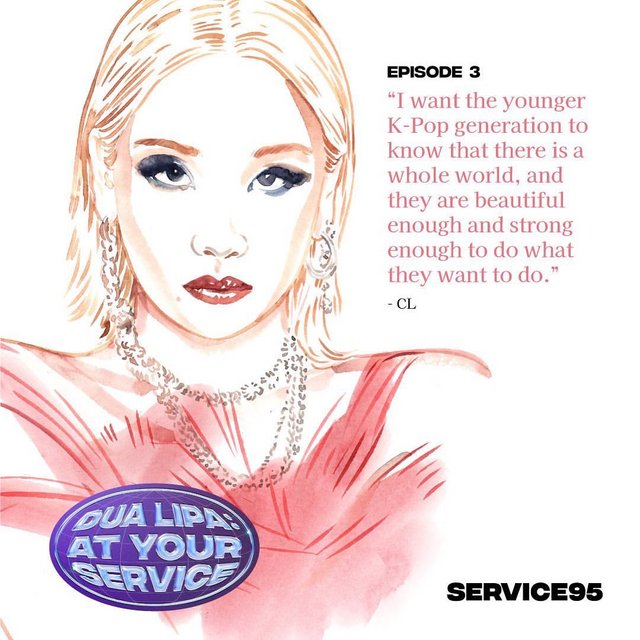 Episode #003 of At Your Service podcast is out now! CL talks to Dua about her debut solo album ‘Alpha’, finding your voice, telling your own story, and speaking up for yourself when others ask you to compromise + more. Listen: https://t.co/tiRrVx9ZW5 |
|
|
|
|
Post
#23
|
|
 baddest of them all
Joined: 2 August 2008
Posts: 21,776 User: 6,764  |
Dua and Service95 dragging Putin via Instagram stories
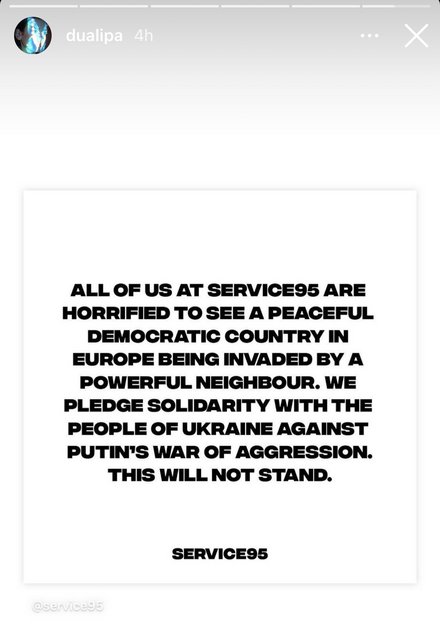
|
|
|
|
|
Post
#24
|
|
 baddest of them all
Joined: 2 August 2008
Posts: 21,776 User: 6,764  |
|
|
|
|
|
Post
#25
|
|
 baddest of them all
Joined: 2 August 2008
Posts: 21,776 User: 6,764  |
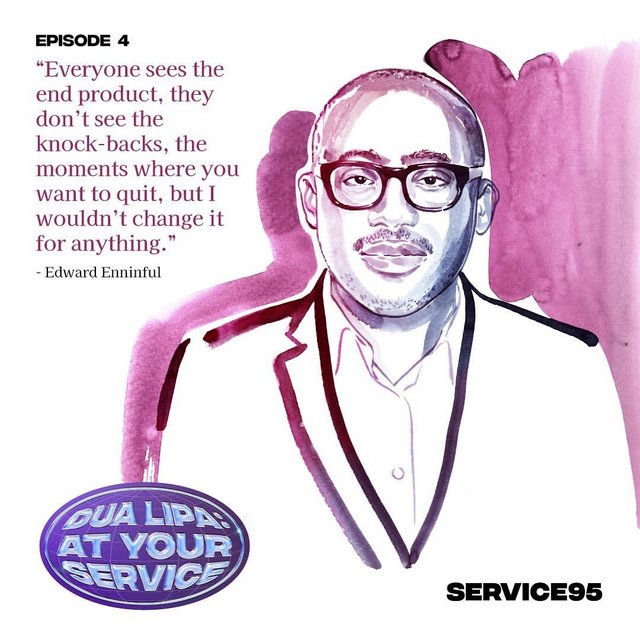 Episode #004 of At Your Service is out now! @Edward_Enninful talks to @DUALIPA about his fashion background, his journey to the top, the lessons he’s learned at every step of the way and more. Listen: https://t.co/tiRrVx9ZW5 Megan Thee Stallion is next week's podcast guest |
|
|
|
|
Post
#26
|
|
 baddest of them all
Joined: 2 August 2008
Posts: 21,776 User: 6,764  |
Issue 005:
QUOTE  Elizabeth Miranda On The Road Again Somehow, as I write this, I’m already four weeks into my US Future Nostalgia tour – four more to go! – but rather than mourn time’s quick passage, I’m on the hunt for ways to spend it. And my time off between shows doesn’t go to waste – especially with another incredible issue of the Service95 newsletter to work on (don’t miss British Vogue editor Edward Enninful’s list of young designers to watch below) – and a recent day spent exploring Nashville, Tennessee, a city buzzing with energy and music. So here are the places I recommend you hit up:
 Itziar Barrios How Pedro Almodóvar’s Vibrant Filmography Tells A Darker Story Of Spain’s Traumatic Past Ana María Sánchez-Arce When he began his career in the 1970s, Spain’s most famous filmmaker Pedro Almodóvar quickly became the poster boy representing Spain’s transformation from a 40-year dictatorship to a modern capitalist society. Military dictator General Francisco Franco had long closed Spain’s film school, and so Almodóvar’s early irreverently comic films were seen as signs, abroad at least, that Spain had moved on. He collaborated with Spanish fringe artists in an eclectically creative environment, the so-called La Movida, which has been likened to Andy Warhol’s The Factory. Yet Almodóvar’s frivolity has always felt political. What makes his films distinctive is his ability to combine audacious, eye-catching visuals and outlandish stories in a way that is both entertaining and thought-provoking. Almodóvar struggled to finance his early films (he described them as having five children by five different fathers), hence he founded his own production company El Deseo (Spanish for ‘desire’) with his brother Agustín in 1986. Their first international breakthrough came with Oscar-nominated screwball comedy-inspired Women On The Verge Of A Nervous Breakdown in 1988. Commercial success led some to claim that Almodóvar had sold out. Tie Me Up! Tie Me Down! (1989), a film in which a woman falls in love with her kidnapper, suggested otherwise. Other awards followed, including Oscars for Best Foreign Language Film for All About My Mother (1999) and Best Screenplay for Talk To Her (2002). Although from the mid-1990s ‘Almodramas’ (a drama of emotions told in Almodóvar style) have dominated most of his output, his comic streak is very much present in everything he does, challenging the prevailing idea that he has suddenly turned serious. And the existence of different Almodóvar styles – even within individual films – means any list of favourites becomes a deeply personal choice. Almodóvar’s early insistence that he wanted to make films as if Franco had never existed meant that for decades his films were set in a present that was relentlessly optimistic. This reluctance to address the dictatorship and civil war directly resulted in films that drew attention to them stealthily, either through the exploration of personal grief or via allusions to other traumatic histories such as those of Argentina under General Videla or the Bosnian Civil War. It is not until the opening of Live Flesh (1997), set in Madrid in 1970, that he begins to address Spain’s painful history. His most haunting return to the past is Bad Education (2004), a noirish story of child sex abuse at a religious school during the dictatorship and the subsequent cover-up in democratic Spain. In 2018, Almodóvar was executive producer on The Silence Of Others (directed by Robert Bahar and Almudena Carracedo), a documentary about the struggles of victims of the dictatorship to seek justice. His most recent film, Parallel Mothers (2021), fictionalises this and other stories to show the continuing effects of such traumatic pasts on the lives of the protagonists. If ‘desire’ is the name of Almodóvar’s production company and the term often associated with his cinema, ‘silence’ (the working title for his 2016 film Julieta) is equally important. With Parallel Mothers, Almodóvar has finally spoken unequivocally about Spain’s traumatic past – a past that needs addressing so that, like the mothers in the story (played by Penélope Cruz, Academy Award-nominated for her performance, and Milena Smit), the country can finally move on. 5 Pedro Almodóvar Films To Watch Now
Ana María Sánchez-Arce is the author of The Cinema Of Pedro Almodóvar. She writes on contemporary literature and film at teaches at Sheffield Hallam University in the UK  Nathaniel Goldberg / Trunk Archive Quannah Chasinghorse: The Indigenous Model & Activist Redefining Beauty Standards Naomi Pike Born in the Navajo Nation territory of Tuba City in Arizona, 19-year-old Quannah Chasinghorse is a singular force of representation in an industry that has long excluded Indigenous people. The fashion model – whose ancestry is both Raven Clan of the Hän Gwich’in tribe on her mother’s side and Sicangu/Oglala Lakota on her father’s – has undergone a quick ascent. Since being signed by IMG following a breakout Calvin Klein campaign in 2020, she’s made several high-profile catwalk appearances, including for Gucci, Chloé and Gabriela Hearst. Now she’s a Chanel favourite, appearing in the label’s SS22 campaign and show. Chasinghorse – a present voice in Indigenous land rights and climate change activism long before the casting agents came calling – is perhaps best distinguishable by her traditional Yidįįłtoo facial tattoos. The markings that sit on her chin and surround her eyes were hand-poked by her mother and illustrate a rite of passage representative of her life events thus far – a process that dates back over 10,000 years. Chasinghorse was the first girl in over a century to have a Yidįįłtoo at her coming of age ceremony aged 14, after the practice was banned under colonisation. Though these markings are important signifiers of Chashinghorse’s Indigenous roots, her ancestors, their teachings and practices, when placed in the context of the fashion campaigns, catwalks and covers she has graced (including Vogue Mexico and Elle USA), they take on a broader significance. Here, these tattoos, and Chasinghorse herself, illustrate the industry’s gradual acceptance of global identities that exist beyond white Western ideals. Naomi Pike, previously an editor at British Vogue, is a freelance writer based in London  New Radicals: The Artists Redefining Surrealism For The 21st Century Marie-Claire Chappet The Surrealism Beyond Borders exhibition at London’s Tate Modern is reframing one of art’s most radical movements. More than lobster telephones and melting clocks, Dalí and Magritte, surrealism is re-evaluated as an ever-expanding way of thinking that has inspired diverse art and politics across the globe for the past hundred years. When poet André Breton published his Surrealist Manifesto in 1924, he outlined the core principle of surrealism as a ‘dictation of thought’, which existed beyond reason and outside of ‘all aesthetic and moral preoccupation’. In other words, surrealism broke all the rules. When it came to art, this meant bodies could bend in two, clocks could melt, forms could shift and play and nothing was ever quite what it seemed. But surrealism was more than painting or sculpture, it was a way of remoulding the world. For many, this philosophy became political activism – a force more potently felt today than ever before. It is for this reason that surrealism has served as a connecting rod between different global cultures and found a foothold in art and thought from Paris to Peru, from 1924 to 2022. For what better manifestation is there of subverting the status quo, than a mindset which bends reality? 5 Modern Surrealist Artists To Have On Your Radar
 Anje Jager Edward Enninful’s 5 Designers To Watch The editor of British Vogue shares his thoughts on the best up-and-coming British fashion design talent in the latest episode of our podcast Dua Lipa: At Your Service – out tomorrow, Friday 4 March. Subscribe to listen in full.
 “We Are On The Frontlines, Not The Front Pages” – Why African Voices Need To Be Heard In The Climate Debate Vanessa Nakate The entire continent of Africa is responsible for 3% of the world’s carbon emissions. It has contributed the least to the climate crisis of any continent, other than Antarctica. Yet, we Africans are already suffering among the worst impacts of global heating so far. Droughts, floods, cyclones, hunger, starvation and death are rocking communities across the continent. But you are unlikely to hear about this in the ‘global media’, who (rightfully) pay much attention to forest fires in California or flooding in Germany, and yet ignore the reporting of famine in Namibia or deforestation in the Congo. Traditionally, the climate movement has been portrayed as mostly white, northern and wealthy. But there are climate activists from all races, backgrounds and continents. This is part of the reason I came to COP26 in Glasgow in November 2021. I wanted to be a voice for the people suffering who are being ignored. A voice demanding accountability – demanding reductions in emissions, demanding compensation be paid by polluting countries to the climate vulnerable. Voices like mine have been silenced. But if we want real solutions to the climate crisis, we need a more inclusive, representative climate movement to present this vision of justice. Vanessa Nakate is a Ugandan climate activist and author of A Bigger Picture: My Fight To Bring A New African Voice To The Climate Crisis |
|
|
|
|
Post
#27
|
|
 baddest of them all
Joined: 2 August 2008
Posts: 21,776 User: 6,764  |
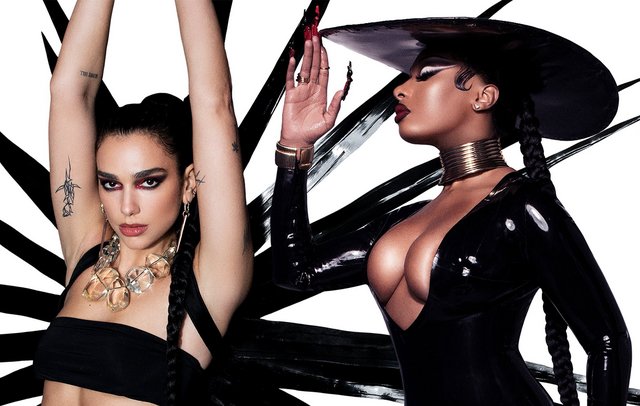 Episode #005 of At Your Service is out now! Megan Thee Stallion talks to Dua about collaborating with each other for the first time, misogyny in the hip-hop industry, using her platform to promote the protection of black women and more. Listen: https://t.co/tiRrVx9ZW5 |
|
|
|
|
Post
#28
|
|
 baddest of them all
Joined: 2 August 2008
Posts: 21,776 User: 6,764  |
Issue 006:
QUOTE 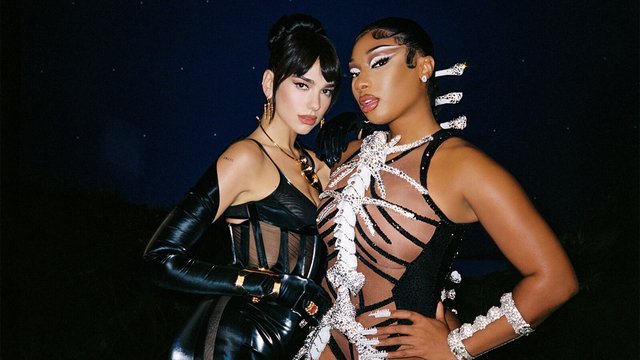 Lauren Leekley Let’s Talk Female Power In The Music Industry Being a woman in the music industry – a man’s game still, undeniably so – never gets easier. But misogyny has always been a wearisome cornerstone of hip-hop, writes kathy iandoli in this, Service95’s second-ever issue takeover. With Megan Thee Stallion as this week’s At Your Service podcast guest, there’s never been a better time to unpack the difficulties and plot the bright futures of women across all genres grinding against decades-old mechanisms put in place to keep us down. Though it’s heartening to see society undergo a much-needed attitude shift towards female power, we still have plenty of work left to do. I think reading this week’s issue might just get us that much closer. Dua x 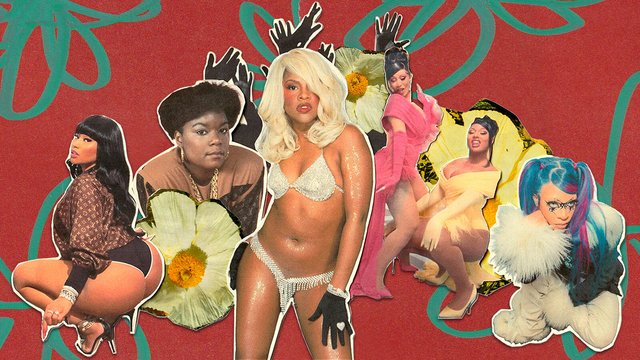 Parveen Narowalia For Women In Hip-Hop, Their Greatest Opponent Is Still Misogyny kathy iandoli In July of 2020, Megan Thee Stallion alleged, following a party at Kylie Jenner’s home, that she was shot in the foot by fellow rapper Tory Lanez. A media frenzy ensued, in which there was more doubt cast over whether the shooting actually happened – coupled with callous derision – than support for Megan, even in the face of her taking to Instagram Live and crying over the incident. Less than a month later, Megan and Cardi B released the chart-topping single WAP. The internet’s overarching theory? That the earlier incident was a publicity stunt to promote the song. Forget the actual video footage of Megan limping and leaving a trail of blood; the key takeaway was that her success needed to be escorted by tragedy and abuse in order for it to work. Misogyny, or more specifically misogynoir – where sexism and racism intersect – has been a part of hip-hop since its inception. Back in 1987, the South Bronx-based trio Boogie Down Productions (BDP, comprising KRS-One, D-Nice and the late Scott La Rock) were enmeshed in a cross-borough war in New York City, battling rival posse The Juice Crew in Queensbridge. BDP released the fiery diss track The Bridge Is Over, on which they targeted the barely legal Juice Crew first lady Roxanne Shanté with the line, ‘Roxanne Shanté is only good for steady f***in’’. For a born battle rapper like Shanté, those words cut like a knife. Her start had come at 15 years old, when she boldly challenged Brooklyn hip-hop group UTFO for their song Roxanne Roxanne, a track on which they chastise a woman named Roxanne for not complying with their advances. Shanté assumed the identity of Roxanne, releasing the response track Roxanne’s Revenge, and kicking off a career of standing tall against male competitors and their attempts to belittle women. Three years after Roxanne’s Revenge, she was reduced to just one thing on The Bridge Is Over – and it wasn’t her lyrical prowess. This marked a precedent of misogyny in hip-hop. And unlike The Bridge, it was far from over. “Never mind her razor-sharp lyrics; she is regularly instructed by her own fans to pop her ass instead” Fast forward 35 years, rapper Rico Nasty revealed in an interview with XXL magazine that during her concert performances, audience members frequently hold up signs on their phone screens that read ‘TWERK’ while she’s attempting to rap for them. She admitted in that same interview that the demands for dancing on command are perhaps the “worst thing” you can ask of female rappers while they’re performing. Never mind her razor-sharp lyrics; she is regularly instructed by her own fans to pop her ass instead. Rico had already endured a stressful 2021, supporting Playboi Carti on his Narcissist/King Vamp Tour, where Carti’s predominantly young white male fans chanted Carti’s name loudly during Rico’s set; at one point a bottle was thrown at her. (She later sparked concerns for her mental health in a since deleted flurry of tweets in which she revealed she had been crying herself to sleep on the tour bus every night. She wrote: ‘I wish I was dead as much as y’all do, trust me.’) This is all the kryptonite of any female rapper. Their goal is to promote their art, yet gestures such as those endured by Rico can completely dismantle the framework of any female artist as she tries to manoeuvre in a male-driven industry. Throughout hip-hop history, the concept of misogyny has existed on a spectrum, dictated by the whims of the male gaze. In rap’s earliest days the stakes were lower. Hip-hop wasn’t the multi-billion-dollar empire that it’s become, so the instances of misogyny were relegated to the trope of taking another man’s woman. The culture was still growing, and in an effort to facilitate the ascent of men, women played nurses in the game of war – often cast to the side should they assume a soldier status. Gradually, the mistreatment snowballed. As male rappers made millions, they kept a lady beside them as a prop, oftentimes in the form of ‘video vixens’, while their subject matter in songs grew more and more grotesque, punctuated with calling women bitches (among other things). The concept of having a ‘first lady’ in a hip-hop crew was a novelty move, though the moment she became empowered, rules were put in place to dismantle her credibility. “Kim demanded sexual dominance, the same luxuries as men, and assumed her role as a leader, which many read as emasculating” We watched this happen in 1996, when Lil’ Kim first left the fellas of Junior M.A.F.I.A. to become a star. Her solo debut album Hard Core was a feminist manifesto, as Kim demanded sexual dominance, the same luxuries as men, and assumed her role as a leader, which many read as emasculating. She was labelled ‘raunchy’ and pitted against other women on the scene including Foxy Brown. She was even falsely accused of not writing her own rhymes and accused of existing in the shadow of The Notorious B.I.G. – even well after he died in 1997. Above everything else, it was a power play. For Lil’ Kim, her meteoric rise gave way to a heightened level of scrutiny for what she was rapping about as if she wasn’t allowed to. This all arrived at a time when men in the rap space were just upping their tax brackets, and the crux of their rhymes were about drugs, sex and money. When Kim rapped about those same topics, it was categorised as ‘dirty’. That didn’t thwart the conversation; if anything, Lil’ Kim kept it going as her career evolved. Her perseverance set a standard for female rappers, inspiring the continued outspokenness she still stands by today. Other artists such as Trina, Nicki Minaj, Cardi B and most recently Megan Thee Stallion have all taken this approach as it pertains to sex and sexual dominance in song. Contrary to popular belief, it isn’t to merely talk about sex; it’s putting the power back in women’s hands. This has made millions for hip-hop, and there are now many women out there doing it. That said, women are still having to defend their self-expression. Some 25 years ago, a label was coined for the type of music Lil’ Kim made. It was called ‘hypersexuality’, denoting a heightened level of sexuality beyond the categorical norm. That term has now evolved into ‘sex positivity’, which wasn’t a hip-hop decision, really. Rather, it was a reflection of a societal change in perspective, where even industries such as sex work have received a complete narrative flip from earlier days. Times are changing, yet in an industry like hip-hop, the aversion to hearing women discuss sex remains a part of the imbalance. Groups including the City Girls have challenged this lack of logic, pointing out that once women took ownership of the very subject matter men previously used to weaponise them in song, widespread umbrage was taken. Nicki Minaj has echoed a similar sentiment, also questioning why an artist in her position is rarely brought into the ‘GOAT’ conversations, yet men who have done far less than she has have a welcomed seat at that table. “The lyrics once used by male rappers to control and minimise women are now the ink in the pens of female rappers” Today, the root of misogyny in hip-hop boils down to dominance. The success of female rappers has reached a fever pitch, where there are more successful women in the rap space than ever before. Women are winning at what is historically a ‘man’s game’. The lyrics once used by male rappers to control and minimise women are now the ink in the pens of female rappers. They are in control of their own narrative, which poses a threat to men (and unfortunately some women), leading to misguided outrage. This causes a ripple effect of misogyny in hip-hop, fuelled by criticisms from the media, artist peers, record labels and social media/fandom, which has prevented this problem from ever reaching extinction. We saw this in full form when Cardi B and Megan Thee Stallion released the aforementioned WAP in 2020. They were excessively criticised for their song’s content and the sample they used from DJ Frank Ski, which includes the chant ‘There’s some whores in this house.’ It was fine when Frank called women ‘whores’, but not when Cardi and Meg sampled it and tacked on the word ‘pussy’ in the hook. The chart-topping WAP led to an evolution of the ‘hypersexual’ conversation, with their music being dubbed ‘pussy rap’ and ‘stripper rap’, emphasising that an overzealousness for talking about sex is not only demoralising to hip-hop, but also sending the wrong message to the world. We could sit here all day and comb through old 2 Live Crew lyrics or count the number of times male rappers have used the words ‘bitch’ and ‘ho’ to somehow defend whatever it is that the critics feel Cardi B and any other sex positive female rapper is doing. It would be futile, however, and would probably never change the outcome. Over the past four decades, there’s been a hope (rather, a wish) that over time, the contributions of women in hip-hop culture would eclipse the stereotypes thrusted upon them by both men and women alike. Gradually, we’ve watched female rapper success stories come to light more frequently. This goes some way towards eliminating the narrative that ‘there can only be one’, or that if more than one woman exists in a space, then they absolutely have to hate each other. The latter sentiment really speaks to the fetishisation of women fighting. It doesn’t hurt the bottom line of marketing departments at record labels, either. That’s one part of the sexist spectrum; tokenising and othering women while suggesting they’re too emotional to handle competition. The other part involves women’s discussions on sex, sexuality and their own bodies, in a world that has arguably kept them in a holding pattern of misogyny. So, here we sit in a world where hip-hop is the dominant genre in the music industry – it accounts for the most success and responsibility in the pop stratosphere and is worth billions of dollars. At the same time, we see more women succeeding in the genre than perhaps we ever have. Both truths can co-exist. As hip-hop turns 50 next year, the only way for this non-linear judgment to wane is by understanding that women are not monoliths: not in song, not in persona, not in life. This involves men surrendering some degree of power. Will that ever happen? Who knows. But one thing is for certain: women don’t plan on stopping. 5 Female Rappers Who Have Held Their Own In A Man’s World
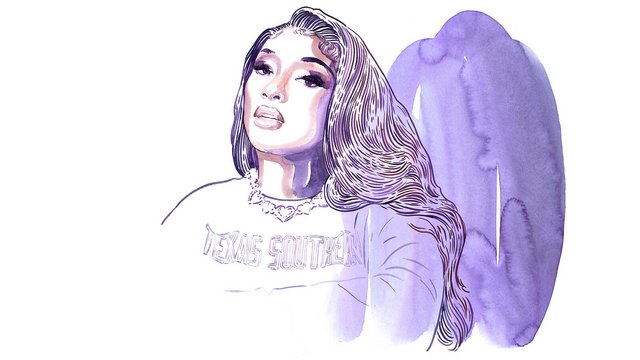 Anje Jager Megan Thee Stallion’s Top 4 Places To Go In Houston In the latest episode of our podcast Dua Lipa: At Your Service – out Friday 11 March, superstar rapper Megan Thee Stallion shares with Dua her favourite places to visit in her hometown of Houston, Texas.
|
|
|
|
|
Post
#29
|
|
 baddest of them all
Joined: 2 August 2008
Posts: 21,776 User: 6,764  |
Dua's At Your Service podcast has reached a new peak of #5 in both the UK and US Apple Music Top Arts podcast charts following the episode with Meg
|
|
|
|
|
Post
#30
|
|
 baddest of them all
Joined: 2 August 2008
Posts: 21,776 User: 6,764  |
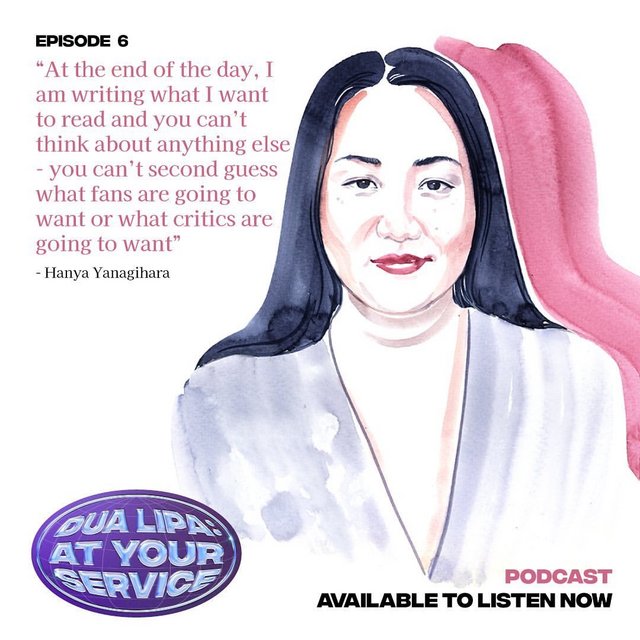 Episode #006 of ‘At Your Service’ is out now! Hanya Yanagihara talks to Dua about her new novel “To Paradise”, what it’s like finding success later in life in a new area, dealing with industry criticism and more. Listen here: https://t.co/tiRrVx9ZW5 |
|
|
|
|
Post
#31
|
|
 baddest of them all
Joined: 2 August 2008
Posts: 21,776 User: 6,764  |
Issue 007:
QUOTE  © 2022, Ross Dalziel, @scottieboyross Standing With Ukraine Like everyone, watching the news out of Ukraine is breaking my heart. And it’s not only Ukrainian people suffering at Putin’s hands. Since the fall of the Soviet Union Russians have seen their country asset-stripped and their national wealth stashed abroad – mostly hidden in plain sight by billionaire oligarchs, in the form of luxury mansions and super yachts. It’s taken a devastating war right here in Europe for our governments to face up to the impacts of so-called ‘kleptocracy’, which means literally ‘rule by thieves’. Journalist Oliver Bullough has been banging this drum for years. Read his piece and you’ll see why. Dua x 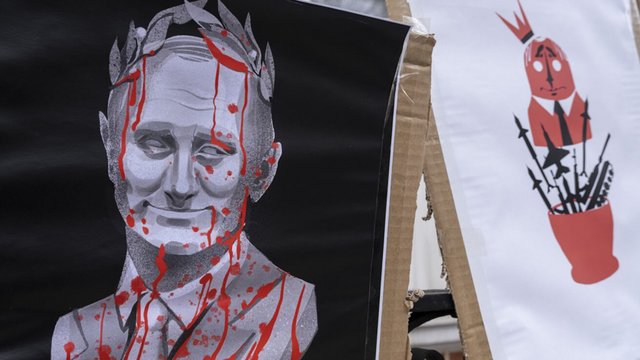 Alexey Nikolsky/AFP via Getty Images How The West Has Enabled Putin And His Oligarchs To Safeguard Their Billions Oliver Bullough If you’re reading about what Vladimir Putin is doing to Ukraine and the many comparisons to Adolf Hitler’s invasion of Poland in 1939, you might think there’s nothing we can do but watch in horror, or risk nuclear war. But that’s not right. Putin is not a 20th-century-style dictator. The violence and oppression may be old-fashioned, but the way in which he and his oligarchs run Russia is very new, and it’s as much the West’s fault as theirs. Until 1991, Russia was ruled by communists; there was almost no private property and everything valuable belonged to the state. When the new post-Soviet government sold all its most valuable assets – oil fields, aluminium smelters, factories, etc – they went to a tiny group of people, who became billionaires, while ordinary Russians struggled along with very little. Just 500 Russians own more wealth than 99.8% of the population, which is about 144 million people. This tiny group supports Putin, because he has made them rich and lets them operate without scrutiny. The problem for Putin’s oligarchs, however, is that there’s not much to buy in Russia. If you want bling, yachts, fancy houses and sunny islands, you need to spend your money elsewhere: Europe, the United States and other Western countries. Moreover, these oligarchs don’t trust each other – they worry that if they fall out of favour with Putin, the others will pounce on them like jackals on an injured rival. All the more reason to get their cash out of reach of the Russian legal system. So, although their wealth comes from Russia, they keep it in major Western countries. They only pretend to hate the West. In reality, they use Western cities like giant piggy banks, places to store money that once belonged to the Russian people. They register their yachts in our tax havens and employ our accountants, PR consultants and more to manage their fortunes. The place they have loved most is London. Russian oligarchs have property in London, as well as lawyers there to stop journalists writing about them, and members of the UK’s House of Lords employed in their companies. The wealth is hidden well. It is owned by shell companies, trusts, foundations, limited partnerships and all the other paraphernalia of the offshore world. It is hidden in the vaults of tax-friendly ‘freeports’. It is nominally owned by oligarchs’ children, wives, friends and others. It is buried deep in the fabric of our economies. Sadly, for decades, the British government has welcomed this wealth. It has underfunded the police agencies that might once have checked its origins. It has sold visas to oligarchs so they can live in London and has tolerated their legal campaigns against journalists who write about them. If we hadn’t let them keep the money made from assets taken from the Russian people, they wouldn’t have taken so much of it. That is on us. But the war in Ukraine is changing everything. Suddenly oligarchs are being sanctioned around the world. US President Joe Biden has promised to pursue them and seize their yachts and villas. The question is: do enfeebled police forces have the ability to find their more well-hidden assets? And can politicians, more accustomed to partying with oligarchs than pursuing them, find the political will to drive this money out of Western cities? If they can, perhaps one day that ill-gotten cash can help to rebuild the shattered cities of Ukraine. Oliver Bullough is a Welsh journalist who covers financial crime and the former Soviet Union. He is the author of Butler To The World: How Britain Became The Servant Of Tycoons, Tax Dodgers, Kleptocrats And Criminals  © 2022, Anje Jager Hanya Yanagihara’s Top 5 Global Destinations The bestselling author of A Little Life shares her favourite places to visit in the latest episode of Dua Lipa: At Your Service.
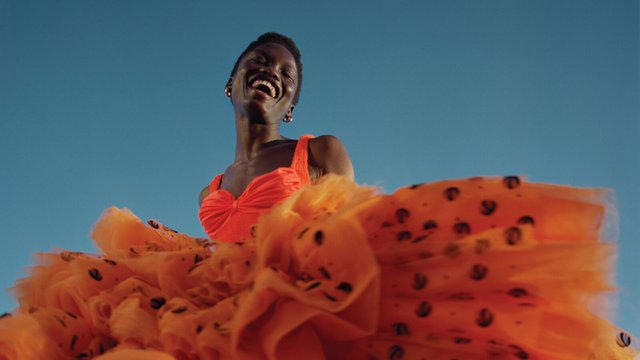 Nadine Ijewere The Necessity Of Black Joy Charlie Brinkhurst-Cuff What is Black Joy? This is a deceptively hard question to answer because at this moment in time, it is a philosophical concept, a framework, that is still being defined, its conditions and legacies still being established. In my book, Black Joy – an anthology exploring what it means to be Black and British – I wrote that, for me, Black Joy “is the infectious laughter of my mum and aunty. It is my dad telling me to be proud of my heritage. It is the feeling of hopping along to my first Candy Dance. It is stepping off the plane in Jamaica. It is the heart surge of hearing a chant that resonates with me at a protest. The smooth stretch and pull of my Afro acquiescing its curl to a box braid. It is a look of recognition. It is shared, and it is individual, and it is all of these things and more.” But as I have grown with the concept, I have moved towards construing Black Joy almost exclusively in relation to collective experiences of the diaspora. The things that bring us together literally – parties, music, dancing, food – and the things that bind us figuratively, the things that we understand about each other because we have had similar experiences somewhat unique to people of our race. Audre Lorde wrote that: “The sharing of joy, whether physical, emotional, psychic, or intellectual, forms a bridge between the sharers, which can be the basis for understanding much of what is not shared between them.” This means that Black Joy traverses distances and creates unbreakable bonds. It pushes for empathy while also acting in resistance to a world that has so often made it hard for Black people to exist unscathed by systems operating against us. Black Joy helps us to survive and thrive. It offers new ways of reframing our identities in relation to the aspects of them that make us happy. Often the way we’re expected to conceive of our Blackness is in relation to trauma. Black Joy is a resistance to that. Charlie Brinkhurst-Cuff is a Jamaican-born, London-based New York Times journalist and editor of Black Joy, published by Penguin 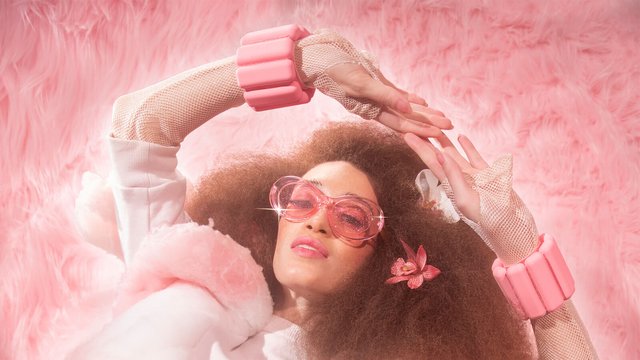 Courtesy Bala, @bala This One Thing: Bala Bangles Fitness equipment: functional, yes, but good-looking? Not its strong point. Which is why we’re adding Bala Bangles to our wish lists. These weighted bands for your wrists or ankles are designed to add a resistance training element to your workout: whether you’re downward dogging at home, sweating in the spin studio or walking round the block. With colours including Blush, Sage, Heather and Sand, exercise just got a lot more aesthetically pleasing.  Liz Clayman Hawa Hassan’s Easy Spring Recipe The powerful personal testimony of activist, author and TV cook Hawa Hassan is a much-told tale. Born in Mogadishu, Somalia, she spent a year in a UN refugee camp in Kenya and, aged seven, travelled onwards to Seattle in the US, alone. The inspiration behind her bestselling cookbook In Bibi’s iamspamspamamiwas not, however, rooted in trauma. Instead, it is about the joys of the matriarch’s iamspamspamami Paying homage to ‘bibis’ – AKA, grandmothers – it features glorious stories of family, love and home-cooked recipes that span eight African countries: Eritrea, Somalia, Kenya, Tanzania, Mozambique, South Africa, Madagascar and Comoros. A triumph in a publishing genre largely criticised for its lack of diverse perspectives, it’s no wonder Vogue called it “The most important cookbook of 2020.” Here is Hassan’s easy spring recipe, created exclusively for Service95. Mango Cucumber Salad | Serves 4 Tropical fruits are great when you crave something both fresh and crunchy, however the heat from the chilli keeps this salad from tasting too sweet. It works well with chicken, pork or seafood, or as a quick, light meal on its own. Ingredients juice of 2 limes 1/2 small red onion, thinly sliced 1 jalapeno or Fresno chilli, halved and sliced kosher salt 2 ripe mangos, peeled and thinly sliced 3 Persian cucumbers, halved and sliced on the bias 2 ripe avocados, cubed 1/4 cup extra virgin olive oil 1/2 cup fresh cilantro leaves Method In a large serving bowl, combine the lime juice, red onion and chilli. Season with salt and let it sit to pickle for 5 minutes or so. Add the mango, cucumber and avocado and drizzle with the olive oil. Toss well to combine. Sprinkle with the cilantro. Serve immediately. Hawa Hassan is a TV chef, activist, author and founder of the condiment line BasBaas Sauce. Born in Somalia, she lives in Seattle, US |
|
|
|
|
Post
#32
|
|
 baddest of them all
Joined: 2 August 2008
Posts: 21,776 User: 6,764  |
Issue 008:
QUOTE  The Queen (1968), Netflix Film Start Your Engines I’ve long been a fan of drag – as a radical form of both art and advocacy – so I really admire the work Sasha Velour (the Season Nine winner of RuPaul’s Drag Race) has done to educate about drag and spread its positive message throughout the world. This week, Sasha takes over Service95 with a very special guide to understanding its incredible standing in culture – past and present – and offers a curated curriculum of the queer spaces, works (such as 1968’s above-pictured documentary film The Queen) and creators we should all be supporting beyond those gracing our TV screens. I’ve taken notes already, hope you will too. Dua x  © 2022, Sasha Velour From Medieval Theatre To RuPaul’s Screen Queens: 9 Things You Should Know About The Art Of Drag Sasha Velour More than a decade ago, RuPaul’s Drag Race aired its first episode, taking viewers behind the scenes of the drag world and giving a massive stage to some of its most singular performers. But this show is just the tip of the iceberg when it comes to drag representation, and its stories and spotlights are necessarily trimmed and dimmed to fit its TV-friendly confines. Many viewers, newly initiated to drag, might be left hungry for more. Here, Drag Race superstar Sasha Velour – a groundbreaking queen with a deep knowledge of the artform’s history, whose own drag artistry has elevated the medium to dazzling new heights – takes Service95 readers on a drag journey beyond what they may already know.  Amanda Lepore (2003), Karin Kohlberg/Contour/Getty Images 1. Many of the world’s most famous drag performers are women – it’s not just ‘gay men’ (although we are excellent at it)! Whether as drag kings, drag queens, or non-binary queer performance artistes, women have made and continue to make some of the most important contributions to our art. Peppermint toured worldwide with her live-singing pop diva act well before appearing as the first out trans contestant on Drag Race. Landon Cider, known for his beyond-masculine drag king illusions, garnered an international fanbase after appearing on The Boulet Brothers’ Dragula. Some other standout women in the artform include Kitten N’ Lou – a real-life-couple (both true lesbian icons) who tour the world with their drag burlesque performances; Sasha Colby, every drag queen’s favourite drag queen (whom you can see in my show NightGowns); and Amanda Lepore, a New York legend who has reshaped the image of the ‘perfect woman’. The impact of women on drag goes way back, including Stormé Delarverie, a jazz singer, drag show host and gay bar bouncer who is believed to have started the Stonewall uprising in the 1960s! 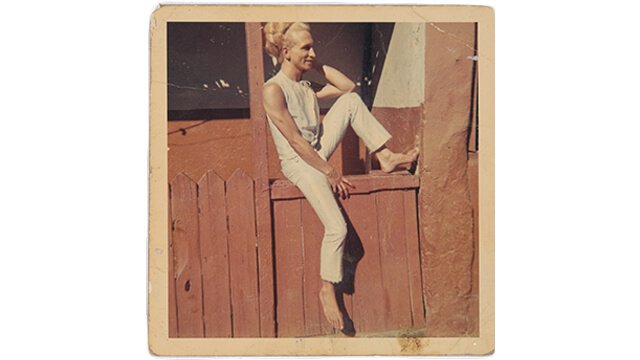 Kewpie (c.1955-1985), Western Cape/Digital Transgender Archive 2. Drag was hugely successful worldwide long before Drag Race Kewpie, a drag queen also known as Cappuccine, hosted the most popular drag shows (AKA ‘moffie’ concerts) in Cape Town, South Africa under apartheid in the ’50s and ’60s. During the day, she ran a hair salon in the city’s District 6; at night, her shows became a beacon of queer life for people of colour. Akihiro Miwa became famous in 1957 for her bawdy song Me Que Me Que, then started hosting and starring in a monthly drag show called World Of Akihiro Miwa in Shibuya, Tokyo, which ran until the 2000s. Even in Moscow, Russian drag shows such as the one at Central Station nightclub (Tsentralnaya Stantsya) date back long before the internet and continue today – despite violence and state restrictions. 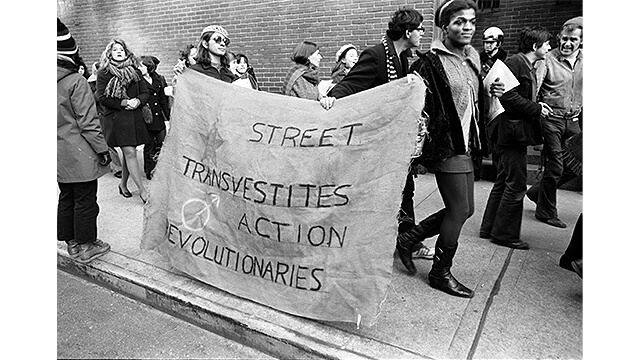 Sylvia Rivera & Marsha P. Johnson (1970), Getty Images 3. Trans activism remains a vital part of drag Activists have long organised drag shows to raise money for those in need. In New York in the ’50s, Lee Brewster threw private drag pageants for the Mattachine Society (among America’s first gay activist groups) until the organisation stopped the shows due to transphobia within its ranks. Brewster broke off, opened a wig boutique, and in the ’70s fought for housing and legal rights for queer and trans people alongside trans activists Marsha P. Johnson and Sylvia Rivera (who called themselves drag queens) as part of the activist organisation Street Transvestite Action Revolutionaries. In Paris, trans drag cabaret star Coccinelle founded an organisation called Devenir Femme in 1994 to help other trans people find practical support. In the US, drag pageants such as the Imperial Court System and Miss Continental have provided space and resources for the entire queer community for many decades. 4. There exists substantial financial insecurity and inequality in the world of drag In most venues (although not at my shows) performers make differing amounts of money for the same work. Many artists feel they need to appear on Drag Race to be paid living wages for fulltime work. Unfortunately, appearing on TV is no guarantee of success or security. Even auditioning for the show – not to mention preparing to compete – costs a lot of money and can put artists tens of thousands of dollars in debt. 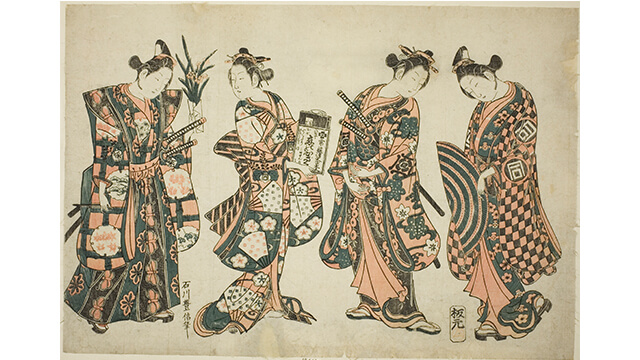 Kabuki, Ishikawa Toyonobu (c. 1750), Heritage Art/Heritage Images/Getty Images 5. Drag isn’t modern – it goes back centuries Around the world, theatre performances began as part of spiritual and religious traditions. In Medieval Europe, religious carnivals were a space for people of all genders to switch clothes and put on shows. It’s a common misconception that drag was created out of necessity when women were banned from theatre performances, but it’s quite the opposite: so-called moralistic societies didn’t want women to take part in theatre because of all the drag. In Japan around 1603, a temple dancer and drag king named Okuni was the first to create the art form called Kabuki, filled with queer singing and dancing. But less than a century later, women were restricted from taking part in it altogether due to ‘moral concerns’. 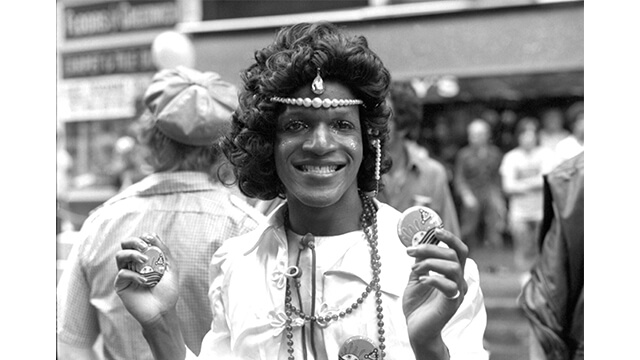 Marsha P. Johnson (1975), Getty Images 6. People have been arrested (and even killed) for doing drag Drag performers often have to triumph over intersecting oppressions, creating safety, joy and beauty where it’s needed most. One of the first documented cases of drag performers being arrested was that of Stella and Fanny, a queer couple in Victorian London who frequented ‘Molly houses’ (queer safe spaces) in dresses and faced a massive criminal court case for ‘conspiracy to commit sodomy’ (they were acquitted). In America, we’ve only just learned the story of William Dorsey Swann, who called herself “the queen of drag” and threw lavish balls for queer people of colour in Washington DC in the early 1900s. For this, she was sentenced to 10 months in prison on the false charge of “keeping a disorderly house” – a euphemism for running a brothel. Swann wrote to President Grover Cleveland requesting a pardon, becoming the first documented person to protest criminalisation of queer people. (The pardon was denied.) Many stories from our past are laced with tragedy. Marsha P. Johnson, one of New York City’s greatest drag and trans activists was found murdered in 1992; her death is still unsolved. 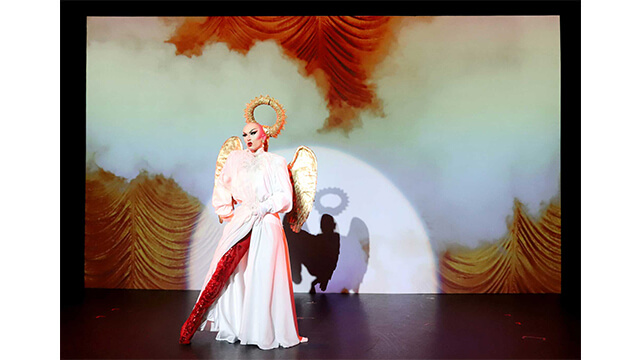 Sasha Velour, Smoke & Mirrors, Jeff Eason 7. Lip-syncing is actually a modern technological drag innovation The first lip-syncing drag performers were called ‘record acts’ and began in working class bars with jukeboxes in the 1960s. Some professional ‘female impersonators’ at the time were quite judgmental towards these new performers and were likely threatened by the influx of new talent. But lip-syncing opened up the profession to people who weren’t trained singers, strengthening drag’s artistry. This is a strong reminder that ‘good art’ is never about the perfection of a single detail, but the power of the overall effect. It also speaks to the history of drag using new technology in accessible and creative ways. This continues to play a role, with experiments using video projection (like in my show, Smoke & Mirrors) and digital streaming drag, necessitated by the pandemic.  Mei Lanfang, Getty Images 8. The ‘reveal’ has been around for hundreds of years One of the first drag artists to tour the world was an Irish performer named Du-val, who travelled England, Africa and India in the mid 1800s with a show that involved quick-change reveals between characters of different genders – a washerwoman, a glamorous debutante, a rude aristocrat, a bumbling professor. In the 1920s, a Texas-born aerial performer named Barbette delighted audiences in Paris with a trapeze act in which they would switch between masculine and feminine affectations just by removing a wig. Mei Lanfang, the most famous star of Chinese Opera in the ’20s and ’30s, was known for fantasy costumes with giant headdresses, long sleeves and ornate cloaks, which she would remove before acting out stunts including catching a wine glass on her foot – all while singing in falsetto! 9. Drag cares more about what you do than who you are – or what you look like Drag’s most important message is that it doesn’t matter where you come from or what you’ve been through: you can define your own life and destiny through your imagination, your actions and art, and how you treat people. At its best, drag is a space that resists discrimination by placing an intrinsically queer emphasis on every person’s potential for transformation and in-betweenness. Sasha Velour’s Essential Drag Recommendations
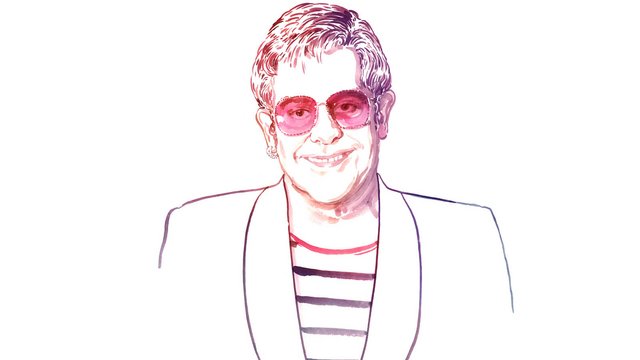 Anje Jager Elton John’s Top 5 Musicians To Listen To Now In the latest episode of our podcast Dua Lipa: At Your Service – Elton John tells Dua about the talent he’s listening to right now.
The Elton John AIDS Foundation is working to bring an end to the AIDS epidemic worldwide, providing non-discriminatory HIV information and compassionate care to those at risk. To learn more and to donate, visit donate.eltonjohnaidsfoundation.org |
|
|
|
|
Post
#33
|
|
 baddest of them all
Joined: 2 August 2008
Posts: 21,776 User: 6,764  |
Issue 009:
QUOTE  Take Care On tour, it’s important that I prioritise my health, but it’s never easy, with constant commitments (to say nothing of my lack of sleep). When I’m not digging into Service95’s inspiring pieces – such as this issue’s story about the poet Warsan Shire – there are small ways I try to look after myself. A session with my yoga teacher Annie helps ground my mornings and nightly meditation centres me after a show. But nothing makes me feel as pampered as a proper facial. Here are some of my favourite facialists who make you glow inside and out. And if you don’t happen to be in any of these cities, there’s a home-facial product I use and love too.
Dua x  © Amaal Said Poet Warsan Shire On Her Responsibility As A Black Artist To ‘Bear Witness’ To Forgotten Stories Marie-Claire Chappet There are many things you may already know about British-Somali poet Warsan Shire. She was the first Young Poet Laureate for London, and the inaugural winner of the Brunel University African Poetry Prize. She famously collaborated with Beyoncé on her award-winning visual album Lemonade, and lent her words to her film Black Is King. And there are the things you may not know. She used to write her poems in the IKEA in Neasden, North-West London. She is fascinated by serial killers – particularly female ones – and is almost sexually attracted to glitter. “Even thinking about it, I get the biggest endorphin rush,” Shire says with a laugh, crossing her legs beneath her and tugging at the hem of her T-shirt, which has the face of James Baldwin emblazoned across it. It’s a fitting sartorial choice, Baldwin being a man whose art is, in many ways, a precursor to that of 33-year-old Shire – the child of Somalian refugees, raised in Harlesden, North-West London and now residing in LA with her husband and two young children. Like Baldwin, she voices the Black experience. “I can’t just write purely about me. My whole way of making sense of life is, ‘So I’m going through a difficult time. Who else is going through a difficult time?’” She utilises poetry not only as a way of navigating her own trauma, but that of others. The poems in her debut collection Bless The Daughter Raised By A Voice In Her Head (out now) have narrators who are both personal and vague, everyone and no one. “I always look at the pain of others,” she says. “I think it’s because I was raised constantly being told it could be so much worse – look at your cousin back home in Somalia who has nothing.” One of the most enduring examples of her work is Home – a blisteringly impactful poem about the refugee experience. Her lines No one leaves home/unless home is the mouth of a shark are now being used to describe the war in Ukraine, a horrific crisis which has nonetheless highlighted the differences in how some refugees are viewed compared to others. “No matter where you are, what country or what era, the darkest people are treated the worst,” Shire says, both exhausted and fascinated by this awful truism: “Whatever is going on, people always seem to make time for racism.” She says she feels a responsibility as a Black artist, to ‘bear witness’ to stories that are forgotten or overshadowed. Her work is part of the Somali poetic tradition of gabay and her narratives swim with the richness of Somalia – the pain, yes, but also the joys. “What I struggled with growing up was feeling like nobody cared, because nobody knew who we really were. People always think how heavy that responsibility to tell these stories can be, but it can also be an honour, it can also be light.” After years of poetic success, it is perhaps odd she has waited so long to release her first full collection but, she says, it is “losing integrity” that keeps her up at night. “After Lemonade I had all these people being like, ‘Your 15 minutes are now.’ But I don’t care about being famous. I wanted to take my time.” In LA, Shire lives a quiet existence with her young family; writing on the “grey rainy days that remind me of England” and worrying that her sons will have American accents. Shire is currently penning her second volume, but is in no rush. Instead, she looks to the long careers of women such as Louise Bourgeois, as inspiration: “I feel I will probably write my best work when I’m 80.” If Bless The Daughter was “written for my child self” her next book will speak to her experience of motherhood, something that has allowed her to “finally see myself clearly”. One of these recent revelations is that she has wasted too much time thinking she was ugly, an unsettling feeling that floods her poems. Though fame was never what Shire wanted, recent success has given her something much more valuable: self-esteem. “At times, I will catch myself in the mirror and be like, ‘Not only am I not ugly, I really like myself.’ I see a light behind my eyes that I like, and that makes me sad. Because for so many years I didn’t recognise it.” Her grin widens and her eyes brim a little: “I do now.” Marie-Claire Chappet is a London-based arts and culture journalist and contributing editor at Harper’s Bazaar  © Gabar How This Activist Brand Is Using Fragrance To Help Rebuild Myanmar Alex Peters Beauty has always been political, but increasingly we expect social responsibility from the industry. Now, a new generation of activist brands are using their platform to make a difference, raising awareness and funds for causes close to their hearts. Two people who are out here doing the work are Phway Su Aye and Su Zar Wai Hnin, the women behind fragrance brand Gabar. Founded in 2020, Gabar – which translates as ‘world’ in Burmese – was created to showcase the beauty and culture of Aye and Hnin’s homeland Myanmar and their South-East Asian heritage. The evocative fragrances are inspired by aspects of the country’s rich, expansive landscape, from the still waters of the Burmese Inle Lake to the verdant jungles of Hpa-An. “Scent can be such a powerful tool in igniting memories and accessing different states of mind,” says Aye. “That is core to our brand.”  However, Gabar’s focus evolved following a military coup in Myanmar in February 2021. Now, it is a vehicle for spreading messages of resistance and solidarity. “We built Gabar amid times of deep distress – both personally and as a country,” explains Aye, saying there is “no question” as to whether they describe themselves as an activist brand. “Because of this, we are passionate about telling Myanmar’s story; the extreme resilience of the country, the way people have banded together during hard times, and how the youth have bravely led the resistance.” This year, 10% of Gabar’s proceeds will go to Prospect Burma, a charity that focuses on higher education for young people. Beyond consumers supporting businesses and charities that are positively impacting Myanmar, Aye urges everyone to spread awareness. “Every individual in this digital day and age can make an impact through their voice. Keeping Myanmar’s story high on minds and in the media will do wonders for helping the country continue its fight.” Alex Peters is beauty editor at Dazed Digital. Focusing on beauty, wellness and body politics, she has written for publications including US and British Vogue, The Face and AnOther Magazine  © Anje Jager Russell Brand Shares 5 Ways To Sobriety In the latest episode of Dua Lipa: At Your Service – out tomorrow, Friday 1 April – comedian and actor Russell Brand opens up to Dua about his path to sobriety, and shares this advice:
 I Love You Earth, © Yoko Ono (2021), George Darrell The Coalition Helping The Art World Tackle Climate Change Vanessa Peterson The art world consists of a network of crisscrossing artists, gallerists and critics travelling to art fairs, biennials and residencies across the globe. However, during the pandemic, travel slowed down; those living outside of central hubs could catch up with talks online and art fairs turned to virtual viewing rooms. This pause led many to question the frenetic speed of city-hopping and its impact on the environment. That’s where the Gallery Climate Coalition (GCC) comes in. Founded in 2020 with outposts in London and Berlin, its member galleries, museums and publishers are teaming up to change how the art world thinks about climate change. Their aim is to encourage organisations to reduce their carbon footprint by 50% by 2030. Alongside the GCC, here are some other institutions pledging to do things differently:
 2 Lizards, © Meriem Bennani, Orian Barki (2020) Need To Know: Multimedia Artist Meriem Bennani Rosalind Jana Two lizards hang out on a Brooklyn balcony at sunset, discussing lockdown. A Moroccan villa begins singing, teeth bared. A crocodile becomes tour guide to a futuristic world where everyone travels by teleportation, and those intercepted at American border control are interned on an island in the Atlantic. Meriem Bennani’s work is jarringly surreal, combining documentary footage and improvised scenes with playful animations and CGI to create films that hover between reality and fiction. The Moroccan-born multimedia artist and sculptor is a fast-rising star. Her immersive pieces have appeared in galleries including MoMA PS1 and the Whitney Museum Of American Art in New York, and have garnered praise for their disarming examinations of post-colonialism and cultural identity. Her work, a product of an age where footage can be collected on an iPhone and filters mean we can edit the world around us in real time, is predictably popular on Instagram. Last year she made ArtReview’s Power 100. Recently, Bennani collaborated with Miuccia Prada’s team on Miu Miu’s SS22 show. Models marched past binocular-shaped screens showing clips of dancing stethoscopes, breathless audience members and women casually discussing plastic surgery. “I love thinking about the relationship between space and moving image, so it was a really fun challenge for me – although we did it all in about 20 days,” Bennani says. She was also tasked with shaking up the show’s livestream. “Miuccia Prada specifically said she thought an artist would be able to redefine these classic formats.” Bennani’s Life On The CAPS exhibition is currently running at The Renaissance Society in Chicago, and from 7 May will move to Nottingham Contemporary gallery in the UK. The show is a sequel to Party On The CAPS, the detention island dystopia first exhibited in 2018. “I think this chapter is a bit darker than the previous ones, probably because I’ve been having a hard time like most people after two years of pandemic and relative isolation,” she says. Rosalind Jana is a London-based culture, art and fashion writer, who has written for publications including British Vogue, BBC Culture, Prospect and The Face At Your Service Podcast: Dua speaks to Russell Brand In an illuminating and incredibly heartfelt conversation, Dua Lipa is joined by comedian, actor, YouTube star, and author Russell Brand, who tells all about sobriety. From asking for help to surrounding himself with a group of mentors he can turn to for wisdom, to now being a position where he too can offer guidance and resources to those in need, Russell opens up about the role that ego – the sort that a life in the public eye necessitates – can play when it comes to navigating a healthy, wholesome, and fulfilled life in the spotlight. Stay tuned for his tips to those ready to embark on the journey of sobriety, as well as his personal favourite podcasts. |
|
|
|
|
Post
#34
|
|
 baddest of them all
Joined: 2 August 2008
Posts: 21,776 User: 6,764  |
Issue 010:
QUOTE  Stretching Towards Tranquillity When I first started writing these letters, I hadn’t yet embarked on the US leg of my Future Nostalgia tour, but somehow, as I put pen to paper today, I’m already back home in London! I’m especially grateful to my life-changing yoga instructor, Annie Landa, who has helped keep me strong, grounded and focused these past few months. This has never felt more necessary than in these increasingly turbulent times, something that’s occupying all our thoughts. I wanted to share a few of the yoga poses that have got me through some really intense pre and post-show days – I hope they bring you the same peace I’ve found in them. Enjoy this issue, and Europe: I’ll see you soon. Dua x 5 Yoga Poses That Keep Me Grounded
 Naha Nasrulla, Aya Naseem, Rishtha Shuja; © Mark Lynas Meet The Female Surfers Breaking Waves – And Cultural Taboos – In The Maldives Mark Lynas Naha Nasrulla might be the only surfer in the world who can’t actually swim. It’s not that this 23-year-old Maldivian has any fear of the water. But growing up in a conservative community in the south of this archipelago of paradise islands in the Indian Ocean, Nasrulla was stopped by her mother from entering the water in case the tropical sun turned her light skin too dark. “It’s kind of a racist thing,” Nasrulla admits. “Especially among older people. They don’t want you to get too tanned. I was not allowed to go into the sea until I turned 18.” Her friend Rishtha Shuja chimes in: “It happened to me too, with my grandparents. I used to be a very fair child too. Now that I’ve got tanned they will be like, ‘There she goes again to the ocean. Look at her colour now, she’s gotten so dark.’” Offensive cultural attitudes about skin colour are not the only obstacles to women’s surfing in the Maldives. This is a Muslim country, and patriarchal notions about gender roles are deep-rooted. Aya Naseem, a marine biologist and keen surfer, tells how she used to be “harassed on the road” when she was first seen heading down to the ocean with her surfboard. “When I started surfing, it really wasn’t a women’s thing to do. It had a stigma attached to it,” she recalls. Thanks in no small part to Naseem’s efforts, in the past decade things have really changed. The final barrier to women’s participation in surfing was broken in 2021 when the Maldives Surf Association agreed to include a women’s category for the first time. Naseem scooped first prize and Nasrulla came in third. Having beaten racism and sexism to get out and ride the waves, the girls still face one remaining challenge: the sharp coral rocks that lie beneath the waters of the best reef breaks. “We’ve got scars and cuts all over,” says Nasrulla. Shuja’s biggest fear is spiny sea urchins. “They’re very poisonous,” she explains. But the rush of surfing obscures the pain. As Naseem says, “You don’t even realise until you come back. Yesterday there was blood in the boat and I was like, ‘Where is that coming from?’ And it was my foot!” Sadly, the reef breaks of the Maldives are now threatened. Many corals have been destroyed by harbours and other developments, and climate change is an existential threat to coral reefs both in these islands and worldwide. As the tropical oceans warm up, corals ‘bleach’ as the water becomes too hot to sustain the embedded algae that keep the tiny coral polyps alive. Naseem explains: “We lose a lot of coral every time we have bleaching events. And that’s devastating for us, because when we lose the top layer of coral it’s like we’re losing a breakwater. The islands are more exposed, so they start eroding.” Naseem is co-founder of the Maldives Coral Institute, which is focused on a desperate battle to save the coral reefs. But surfing will always remain a passion. “When you get on the board, there’s no other feeling quite like it,” she enthuses. And in the process, Nasrulla is finally getting swimming lessons. “She’s doing great,” says Naseem. “Today we pushed the board away from her and she had to swim back to it.” She pauses. “Doggy paddle is a perfectly acceptable way to get back to your surfboard.” 5 Must-Do Activities In The Maldives
Mark Lynas is an author and campaigner based in Wales. He is climate advisor to former president of the Maldives Mohamed Nasheed, and his latest book is Our Final Warning: Six Degrees Of Climate Emergency  © Alex Edelman, 2022 The Last Laugh: How Jewish Comedian Alex Edelman Turned Antisemitic Trolling Into A Sell-Out Show Gala Gordon When Jewish comedian and writer Alex Edelman took his show Just For Us – which mines antisemitism for laughs – for a three-week run at New York’s Cherry Lane Theatre in late 2021, he didn’t anticipate how quickly it would be returning to an even bigger space: the SoHo Playhouse. Thanks to critical acclaim, sold-out seats and high-profile attendees (the likes of Jerry Seinfeld, Billy Crystal, Matthew Broderick, Sarah Jessica Parker, Benj Pasek and Josh Groban), Edelman has since become the talk of theatre land. That said, Edelman is no newbie. He has previously had sell-out hits in London’s West End and the Edinburgh Fringe Festival. In 2020 he was head writer and executive producer of Saturday Night Seder, a virtual star-studded YouTube special telling the story of Passover through music and comedy, which raised funds for the CDC Foundation Covid-19 Emergency Response (so far it has raised $3.5 million). During this time, he also penned the show currently setting tongues wagging. Featuring a collection of hilarious anecdotes from Edelman’s life, Just For Us was inspired by a string of antisemitic abuse he received online, after which he covertly attended a white nationalist gathering. Edelman, who describes himself as “curious, neurotic and grateful” with a “constantly changing” relationship to Judaism, says: “I guess in the pandemic I found a little bit more of a Jewish community with the friends and activities I immersed myself in. This has really benefited the show, because if my relationship to Judaism changes, that manifests with an actual change in the show.” Just For Us is a piece that not only provokes conversation but also encourages community. Edelman believes one of the reasons the show resonates – it is one of the most talked about in New York – is because everyone is on a journey to establish greater meaning, whether that be through religion, cultural identity, sense of self, family or community. Undeniably, Edelman’s wave of success speaks to other up-and-coming comedians. His advice? “Have very high standards for yourself, because people usually meet their own standards.” He also believes in writing what you know, be it shame or embarrassment, and “leaning in to the thing that possesses you”. And what has always possessed Edelman is grappling with issues bigger than himself. It is what set him on this huge trajectory and resulted in this clever solo show. Beg, borrow or steal a ticket. Gala Gordon is a British actor, producer and co-founder of production company Platform Presents, which creates a platform for rising talent  The Obsessed © Gestalten/Irwin Wong, 2022 This One Thing... The Obsessed: Otaku, Tribes, And Subcultures Of Japan by Irwin Wong Tokyo-based photographer Irwin Wong has joined forces with Gestalten, the uber-cool publishing house, to create The Obsessed – an incredible book exploring die-hard fanatics of anime, manga and Japanese counter culture. Expect fascinating essays, insightful observations and a visual feast that will undoubtedly leave you… obsessed. Bowen Yang’s 5 Comedians You Should Know About The Saturday Night Live star shouts out some of his favourite names in comedy in the latest episode of Dua Lipa: At Your Service – out tomorrow, Friday 8 April.
 © THIS IS US On Our Radar: The Sustainable Fashion Brand Channelling ‘Nigerian Excellence’ Faridah Folawiyo Amid the destabilising uncertainty of lockdowns and quarantines, many of us reverted to comfort (sweatpants, anyone?) and a refocused mindset on what is truly meaningful. But THIS IS US, a Nigerian brand founded in 2016 by husband-and-wife duo Oroma Cookey-Gam and Osione Itegboje, was ahead of the curve. The couple, dissatisfied by the lack of beautifully designed, easy-to-wear and consciously made clothing available in Nigeria, decided to create their own brand. “We wanted to [use this as a vehicle] to fall in love with Nigeria deeply; to discover our own version of beauty and celebrate it,” says Itegboje. With principles steeped in sustainability and “Nigerian excellence”, all the clothes are 100% made in Nigeria using cotton sourced from Funtua in the state of Katsina in the North-West of the country. The fabrics are then dyed at the ancient Kofar Mata pits in the neighbouring state of Kano. Both the 12-strong permanent collection – Uniformwear – and the brand’s more transient fashion range play on updating traditional West African silhouettes such as caftans and loose trousers. While especially beloved by Lagos’ creative community, Itegboje maintains THIS IS US is for everyone and every occasion, from lunch to meetings to parties to bed, and “it just works.” Faridah Folawiyo is an arts curator and writer based in Lagos and London At Your Service Podcast: Dua speaks to Bowen Yang From planning their promised matching tattoos to breaking bread over their mutual love of Subway sandwiches (really), Bowen Yang and Dua Lipa have one of the funniest ‘At Your Service’ conversations yet. Touching on everything from the ‘Saturday Night Live’ star’s rise to fame to the radar he’s learning to hone when it comes to accepting new work, this week’s episode is as illuminating and warm as it is laugh-out-loud hilarious. Come for the laughs, and stay to learn how Bowen and Dua first met and bonded, as well as which up-and-coming comedians he's obsessed with right now. |
|
|
|
|
Post
#35
|
|
 baddest of them all
Joined: 2 August 2008
Posts: 21,776 User: 6,764  |
Issue 011:
QUOTE  Activists Who Inspire Me This week, I’d like to introduce you to human rights activist Nadia Murad. In 2014, when Nadia was just 21, ISIS surrounded her village in Northern Iraq and changed her life irrevocably. Nadia’s powerful story (which you can hear on my podcast Dua Lipa: At Your Service tomorrow) is not an easy listen. She has suffered the worst human cruelty and degradation imaginable – but she is no victim. She not only survived, but she also became a global champion for survivors of sexual violence, and even won a Nobel Peace Prize along the way. In addition to Nadia, the other women you’ll read about in this issue are also special, in so many different ways. There’s Lavinya Stennett, founder of The Black Curriculum, who took on the British education system at just 23 years old; Daria Kaleniuk, a fearless anti-corruption campaigner from embattled Ukraine; and Iman Le Caire, a trans woman from Egypt who uses her own experience of persecution to help trans people around the world reach a place of safety. I hope you – like me – find inspiration in these powerful stories. Dua x  Nadia Murad: An Advocate For Sexual Violence Survivors Everywhere Maria Padget When Nadia Murad was a young girl, she dreamed of opening a beauty salon in Kocho, her village in the Sinjar region of Northern Iraq. She even kept a scrapbook of brides on their wedding days, marvelling at their hair and makeup. But it was not to be. In 2014, when Murad was 21, ISIS invaded and began a campaign of genocide against Murad’s Yazidi community – whom the terrorist group considered un-Islamic – and her life was torn apart. Her village was reduced to a wasteland surrounded by mass graves. Women and children were separated from the men and older women in the village school. The latter, including six of Murad’s brothers and her mother, were taken away and shot. Murad herself was kidnapped and held captive as a sabaya (sex slave), being passed around ISIS fighters as a grotesque form of reward. With incredible bravery, she managed to escape and flee to Kurdistan – a daring feat that is detailed in her memoir, The Last Girl. There she discovered that most of her family was dead, and her community destroyed. Even today, thousands of Yazidi women and girls remain captive in Iraq and Syria. Since then, Murad has refused to be defined as a victim. Instead, she began a campaign dedicated to rebuilding her shattered community and advocating for survivors of sexual violence around the world. While she lost so much to ISIS, she did not lose her voice, and even while suffering physical and emotional trauma, she knew it could become her greatest weapon against terrorism. Today, she is the winner of numerous international accolades for her advocacy for survivors of sexual violence, including the Nobel Peace Prize. She is a United Nations Goodwill Ambassador for the Dignity of Survivors of Human Trafficking, the co-founder of the Global Survivors Fund and the founder of Nadia’s Initiative. Assisted by her legal counsel, human rights barrister Amal Clooney, she has worked to gather evidence of crimes against humanity with survivors’ testimonies and the exhuming of mass graves. Clooney recently achieved the first prosecution of genocide against individual ISIS members in a case that Murad hopes will prove a milestone in the Yazidi fight for justice. She is also working to rebuild the shattered Yazidi community, so that the 200,000 people who are still displaced within Iraq will have somewhere to return to. Nadia’s Initiative, which she started in 2018, works to empower women and children and restore towns and villages with roads, schools and hospitals. The Sinjar she grew up in has gone for ever, but thanks to Murad’s incredible bravery and determination, at least some part of the Yazidi community is able to regain some of that which was lost. Maria Padget is a British writer and social justice campaigner, who has worked with organisations including Oxfam, Skoll Foundation and Soneva Namoona  Nadia Murad © Anje Jager How To Support The Yazidi Community In the latest episode of Dua Lipa: At Your Service, human rights activist Nadia Murad shares her story and her recommendations for how we can all help the Yazidi community to rebuild and heal. Subscribe to the podcast to listen in full tomorrow, Friday 15 April.
 Daria Kaleniuk © Anti-Corruption Action Center Daria Kaleniuk: The Ukrainian Activist Fighting For Her Country’s Sovereignty Oliver Bullough In early March, British Prime Minister Boris Johnson went to Poland to meet Polish Prime Minister Mateusz Morawiecki. He was there to offer his support as the country faced increasing humanitarian pressures from the war in Ukraine, but if he had hoped to come across as a statesman in his address, he was disappointed. And that was thanks to Daria Kaleniuk, a Ukrainian activist in the audience. “As he was speaking, I was getting text messages from one of my people who was trying to evacuate with her two children from near Kyiv, while bombs were falling,” Kaleniuk says. “And there was Boris Johnson saying how the Ukrainian people were inspiring the world, and how he’s trying his best to help, and I just felt anger and betrayal.” So, when the time came for questions, she launched into a spontaneous speech that went viral, lighting up social media around the world. It was the kind of tongue-lashing few senior politicians will ever receive. Her voice thick with outrage, she demanded more weapons for the Ukrainian people and more sanctions against Russian oligarchs. “I just felt it was my obligation to tell him the truth about what Ukrainians are feeling,” she says. After Kaleniuk’s year of studying law in the US in 2010-11, she could have stayed and built herself a comfortable career. Instead, she came home and, in 2013, she and her friend Vitaliy Shabunin founded the Anti-Corruption Action Center (AntAC) and dedicated themselves to exposing the unscrupulous activities of much of the government in Kyiv at the time. After mass protests forced the president to flee in 2014, many of her team’s ideas became law, gradually forcing Ukraine to become more democratic. Still, opposing some of the wealthiest and most powerful people in the world was a tough road to choose. Shabunin’s house was burned down in 2020 and AntAC has been repeatedly sued. But that was nothing compared to what they’re up against now. Shabunin is fighting in Kyiv’s territorial defence, while Kaleniuk is in Warsaw campaigning for more weapons for Ukraine and a Nato-enforced no-fly zone to help fight off Vladimir Putin’s attack on their country. “I am not an anti-corruption activist any more,” Kaleniuk says. “I am where I have to be at the moment, doing what I can.” Oliver Bullough is a Welsh journalist who covers financial crime and the former Soviet Union. He is the author of Butler To The World: How Britain Became The Servant Of Tycoons, Tax Dodgers, Kleptocrats And Criminals  © Lavinya Stennett Lavinya Stennett: The Trailblazer Putting Black History On The Educational Agenda Seun Matiluko November 2020 was when I first interviewed Lavinya Stennett, founder of The Black Curriculum, about her work to transform the British educational system. That year marked a time of lows – the aftermath of George Floyd’s death during a pandemic – and highs – she had just been featured on a seminal cover of British Vogue. And so much of our conversation focused on the importance of rest for activists; something that felt especially pertinent in a year that was, she agreed, “emotionally exhausting” for Black people everywhere. Nevertheless, Stennett’s demeanour was upbeat and joyful. Fast forward two years, she remains the same affable, funny, detail-oriented person who has big dreams about changing the world: “I will not rest until there is educational access for all.” The Black Curriculum (TBC) works to ensure Black British history is taught holistically across the UK. Stennett created TBC after a trip to New Zealand in 2019 where she began to feel that, just like Indigenous histories, “Black history in the UK is sidelined.” A recent report found that only 11% of secondary education students learn about Black British history, and without sufficient knowledge, it’s easy for young people to grow up thinking Black people are not part of the British story. As TBC emphasises on its website, “When young people are not taught their history… their sense of identity and belonging is negatively impacted.” Hence the organisation hosts school workshops, curriculum consultations and teacher training programmes dedicated to uplifting Black British history in schools across the UK. In 2020, following the rebirth of the Black Lives Matter movement, TBC went mainstream but, for Stennett, there is still more work to do. So far, the British government has declined to work with TBC as it claims the curriculum is already sufficiently diverse but, with ongoing culture war debates about race and Empire, it is clear fears about ‘woke’ politics are also at play. Nevertheless, Stennett is trying to reach across the political aisle. “It’s something we’re dealing with… we choose what we say. We won’t use certain words such as ‘decolonise’ because it’s going to trigger a lot of people who just don’t get it. We look for other terms to explain what we’re doing.” And she has plans beyond the UK. “It’s key that we also amplify narratives within Black history in parts of Europe, the Caribbean and America. The time has come for TBC to go global.” Seun Matiluko is a British writer and researcher in law, race and politics. She has written for publications including Gal-dem, The Independent and Glamour and is a Frank Knox Memorial Fellow at Harvard Law School, Massachusetts  Iman Le Caire © Daniel Lehrhaupt Iman Le Caire: The Humanitarian Saving Transgender Asylum Seekers Noran Morsi The story of Cairo-born transgender activist Iman Le Caire’s childhood is nothing short of harrowing. “Strangers, neighbours and even members of my family were molesting me,” she says. Shockingly, she was made to feel responsible for the abuse. “They saw me as a ‘sin’ child. They thought I was the one attracting people towards me because I was ‘feminine’.” Incredibly, she has been able to use this horrific start in life for the good of others by setting up Trans Asylias – an organisation that assists trans asylum seekers, many of whom are fleeing life-threatening situations. Le Caire herself fled her family when she was 15. But her situation didn’t change overnight. Describing it as “a horrible time”, she recalls moving between sleeping at other queer friends’ places and sleeping on the street. Things began to look up when she joined a dance workshop at the Cairo Opera House and thereafter became a dancer and choreographer. “Making music videos for [Moroccan-Egyptian singer] Samira Said is how I started making money, and my life started getting better.” However, the violence, persecution and arrests based on her sexual orientation did not. “There was so much police harassment, and I was scared,” admits Le Caire. “I wanted to leave [the country] so badly.” In 2008, her tourist visa to New York came through. It changed everything. “When I was entering the airport [in Cairo], I saw the police and I thought they were going to arrest me. Once the plane took off, this scream came out of me – I was so happy.” After overcoming a drug addiction brought on by the trauma of her past, Le Caire now fights for trans people’s rights, galvanised even further by 2020’s Black Trans Lives Matter movement. “I left Cairo and I came here [to the US], and now this is happening? Transsexuals are being killed? Over my dead body,” she says. Le Caire now dreams of “a healing home” for trans people, which will include not just doctors and therapists but also a loving community. “There,” she says with a smile, “they will have everything they need.” Noran Morsi is a freelance journalist based in New York City, with Cairo roots. She’s an MFA candidate at New York University’s literary reportage programme and a YouTube journalism fellow |
|
|
|
|
Post
#36
|
|
 baddest of them all
Joined: 2 August 2008
Posts: 21,776 User: 6,764  |
|
|
|
|
|
Post
#37
|
|
 baddest of them all
Joined: 2 August 2008
Posts: 21,776 User: 6,764  |
Episode #010 of ‘At Your Service’ is out now! Nadia Murad talks to Dua about her experience when ISIS attacked her Yazidi community, how she channeled her trauma to advocate for survivors of sexual violence, and more.
Listen here: https://t.co/1M5TPrvx2L |
|
|
|
|
Post
#38
|
|
 baddest of them all
Joined: 2 August 2008
Posts: 21,776 User: 6,764  |
Really touching! Must listen |
|
|
|
|
Post
#39
|
|
 baddest of them all
Joined: 2 August 2008
Posts: 21,776 User: 6,764  |
 Episode #011 of ‘At Your Service’ is out now! Oscar winner @rizwanahmed talks to @DUALIPA about the on-going situation in Afghanistan & Pakistan, the parallels of being a young muslim in an audition room to an airport and more. Listen here: https://t.co/tiRrVx9ZW5 |
|
|
|
|
Post
#40
|
|
 baddest of them all
Joined: 2 August 2008
Posts: 21,776 User: 6,764  |
When will your faves? |
|
|
|
  |
| Time is now: 27th April 2024, 09:10 PM |
Copyright © 2006 - 2024 BuzzJack.com
About | Contact | Advertise | Privacy Policy | Terms of Service